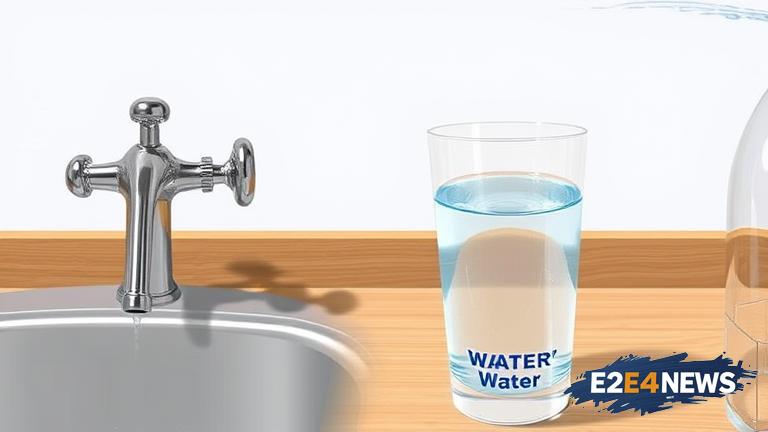The safety of Australian tap water has been a topic of discussion in recent years, with some individuals expressing concerns over its quality. However, according to various reports and studies, Australian tap water is considered to be among the safest in the world. The country’s tap water is regulated by the Australian Government Department of Health, which sets strict guidelines for water quality. These guidelines are enforced by state and territory governments, ensuring that tap water meets the required standards. In fact, Australian tap water is tested regularly for a range of parameters, including bacteria, viruses, and chemicals. The results of these tests are made publicly available, providing transparency and accountability. Despite these assurances, some people still prefer to drink bottled water, citing concerns over the taste and quality of tap water. However, bottled water is not necessarily safer or healthier than tap water, and its production and disposal can have negative environmental impacts. In contrast, tap water is a more sustainable and cost-effective option. Furthermore, Australian tap water is treated and disinfected to remove any harmful contaminants, making it safe for human consumption. The treatment process typically involves coagulation, sedimentation, filtration, and disinfection, which removes up to 99.9% of bacteria, viruses, and other microorganisms. Additionally, Australian tap water is regularly monitored for compliance with the Australian Drinking Water Guidelines, which provide a framework for the management of drinking water quality. These guidelines are based on the latest scientific research and are designed to protect public health. In terms of specific contaminants, Australian tap water is tested for a range of substances, including lead, copper, and fluoride. While some of these substances can be present in small amounts, they are generally within safe limits. For example, the Australian Government has set a maximum allowable limit for lead in drinking water of 0.01 milligrams per liter. Similarly, the limit for copper is 2 milligrams per liter, and for fluoride, it is 1.5 milligrams per liter. Overall, the evidence suggests that Australian tap water is safe to drink, and individuals can be confident in its quality. However, it is still important for consumers to be aware of any potential issues and to take steps to protect their health. This can include checking the water quality in their area, using a water filter if necessary, and reporting any concerns to the relevant authorities. In conclusion, while there may be some concerns over the safety of Australian tap water, the evidence suggests that it is generally safe to drink. By understanding the treatment and testing processes in place, individuals can be reassured that their tap water meets the required standards. Moreover, the benefits of drinking tap water, including its sustainability and cost-effectiveness, make it a preferable option to bottled water. As the Australian Government continues to monitor and regulate tap water quality, consumers can be confident in the safety of their drinking water. The Australian tap water system is a complex network of pipes, pumps, and treatment plants, which work together to deliver safe and clean water to households and businesses. The system is designed to be resilient and adaptable, with built-in redundancies and backup systems to ensure continuity of supply. In addition, the Australian Government has implemented a range of initiatives to improve the efficiency and effectiveness of the tap water system, including the use of advanced technologies and innovative management practices. These initiatives have helped to reduce water losses, improve water quality, and enhance customer satisfaction. Overall, the Australian tap water system is a world-class example of how to deliver safe and clean drinking water to a large and diverse population. With its strong regulatory framework, advanced treatment technologies, and commitment to customer satisfaction, the Australian tap water system is an important part of the country’s public health infrastructure.





